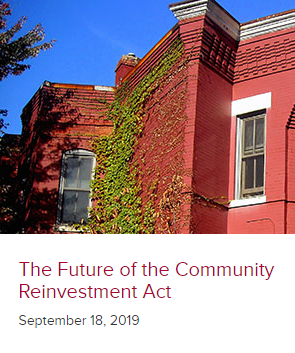
Updating CRA Geography: It’s Not Just About Assessment Areas

In our modern digital area, industries once dominated by brick-and-mortar institutions have shifted much of their operations online. Banking is no exception. However, some important banking regulations have not been fully updated to account for contemporary changes in lending activity.
In his recent paper, “Updating CRA Geography: It’s Not Just About Assessment Areas,” NYU Furman Center Senior Policy Fellow Mark A. Willis offers his suggestions on how to effectively modernize one crucial regulation authorized under the Community Reinvestment Act (CRA). Published by the Penn Institute for Urban Research, the paper proposes a method to evaluate the CRA performance of large retail banks that use the internet to serve customers located beyond their branch network.
The CRA was passed in 1977 to encourage banks to help meet the credit needs of their local communities. The legislation reflected the concern that many low- and moderate income (LMI) neighborhoods suffered a shortage of credit. The CRA regulations require banks to delineate “assessment areas” (AAs) surrounding their branches, or if they have no branches then at least one AA around their main office, where they needed to focus such CRA activities as:
- Mortgage loans
- Small business loans
- Retail bank services
- Community Development loans, investment, and services
The proposal provides roadmaps for updating the evaluation of the CRA performance of (1) branchless, large retail internet banks and (2) large internet retail banks with deposit-taking branches. Because regulators currently focus their evaluation of banks on their CRA performance within designated AAs, these geographically-unbounded banking institutions are discouraged from expanding their CRA efforts beyond their AAs, leading to “hotspots” of concentrated CRA activity.
The core of the proposal involves separately weighing a bank’s CRA activity within its AA/AAs and outside its AA/AAs, with the latter evaluation consisting of tests for both the bank’s retail products (built up from evaluations at the local level) and community development activities (evaluated at the national level) to ensure it is meeting the needs of LMI households and communities. By separately evaluating these two types of CRA activities using existing CRA exam tools, the paper asserts that banks will be more confident in their ability to get CRA credit for conducting eligible activities in areas of high need that may be outside their AA/AAs.
Additionally, the paper calls for consideration of eliminating the requirement of an AA for branchless banks, to allow them to focus directly on finding the best national opportunities for meeting their affirmative obligations and reducing the likelihood of hotspots.
Ultimately, by removing the barriers that limit incentives for banks to serve a broader range of LMI communities, these proposals could encourage banks to seek out activities that have the most impact, and ultimately encourage more effective use of CRA resources.
Access the paper: https://penniur.upenn.edu/uploads/media/Mark_Willis_10-1.pdf


